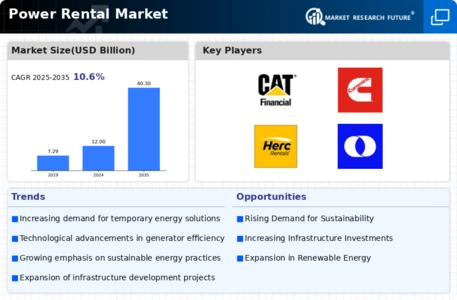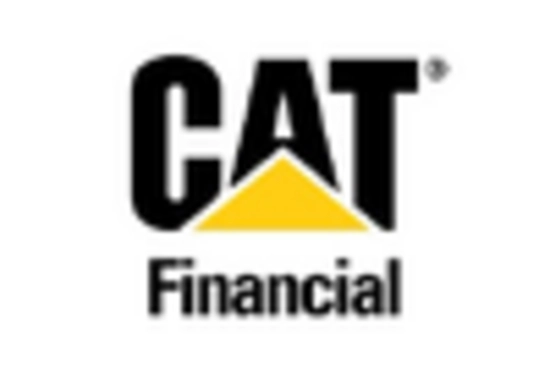Market Trends
Key Emerging Trends in the Power Rental Market
The burgeoning demand within the construction sector has emerged as a pivotal force propelling the comprehensive expansion of the power rental market. In the current landscape, the significance accorded to the infrastructure sector stands out as a strategic response to economic challenges and financial uncertainties. Governments worldwide are strategically allocating substantial budgets to foster the development of both physical and social infrastructure, thereby stimulating increased demand for goods and services. The robust growth of the construction industry, fueled by such governmental initiatives, serves as a catalyst for GDP augmentation, concurrently creating expansive growth prospects for a myriad of industries, including automobile, steel, and power.
The escalating emphasis on infrastructure development is a global phenomenon, with governments recognizing its pivotal role in economic revitalization. The proactive investment in construction projects serves a dual purpose—addressing the need for upgraded infrastructure while concurrently fostering economic growth. As a consequence, various industries interconnected with construction, such as automotive, steel production, and the power sector, stand to benefit significantly from the positive spillover effects of this developmental focus.
Recent data from Dodge Data & Analytics underscores the sustained growth within the construction market over the past years. Specifically, the U.S. construction market has experienced a noteworthy trajectory, witnessing a substantial surge from USD 441.5 billion in 2011 to a robust USD 667.7 billion in 2015. This growth trajectory signifies the sector's resilience and its pivotal role in the broader economic landscape.
The construction industry's multifaceted impact on economic metrics is evident in its contribution to Gross Domestic Product (GDP) and the ripple effects on ancillary industries. A flourishing construction sector not only translates to increased economic output but also generates employment opportunities, fostering a more robust and dynamic economic ecosystem. As construction projects gain momentum, diverse sectors, ranging from heavy machinery and automotive to materials like steel, experience heightened demand, further amplifying economic activity.
The symbiotic relationship between the construction sector and the power rental market is noteworthy. The burgeoning construction activities necessitate reliable and scalable power solutions, leading to an increased reliance on power rental services. These services encompass a spectrum of offerings, including the provision of temporary power generators and related equipment, ensuring uninterrupted and efficient power supply during construction phases.
In conclusion, the growth trajectory of the construction sector assumes a paramount role in shaping the dynamics of the power rental market. As governments worldwide continue to channel resources into infrastructure development, the construction industry stands poised for sustained growth, ushering in a cascade of positive effects across various sectors. The interconnectedness of construction and power rental services reflects the intricate interplay between economic development, infrastructure enhancement, and the imperative for reliable and flexible power solutions in the evolving landscape.









Leave a Comment